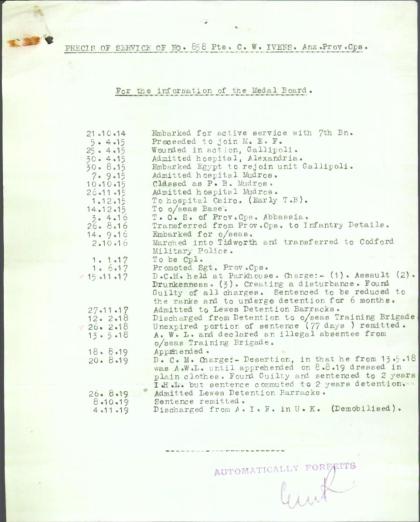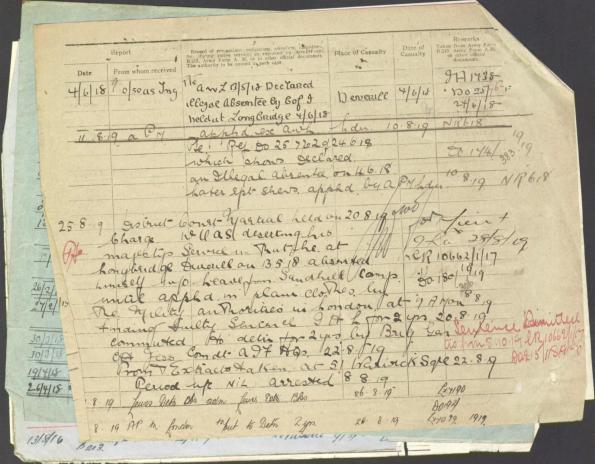A simple query arrived at this Blog last week, to help track down a grandmother whose maiden name was Ivens.
We had her name but precious little else yet still managed to find her reasonably quickly. She was a descendant of the Ivens from Raunds in Northamptonshire and we can now trace her back to one John Ivens (1756-1832). So, that was relatively simple and the information discovered chimed with the family anecdotes.
But it generated another question – her brother.
The information available, showed him as:
Charles William Ivens was born in Putney in 1895. In 1901, he is with his grandmother Annie Ivens (widowed) in Streatham, London. In 1911, he is at home in Leicester with his father (widowed) and sister ( being the grandmother of the original query). ‘Aged 15’ at this time, Charles William was cited as a Chartered Accountant’s Clerk. In 1919 there is a marriage of a Charles W. Ivens to Jeanne Nuland / Nuelandt (?) at St Pancras, London. In 1939, there is a Charles W. Ivens, a builder, with a birthdate given as 22nd June 1895, married to a Jeanne, living in Paddington, London. Jeanne Ivens is registered for voting in London in the years 1945, ’46, ’47 in Westminster, and 1949 and ’50 in Marylebone.
In 1955, there is a curious newspaper report / notice asking for the whereabouts of Charles William Ivens (b.1895), son of Charles and Edith Ellen.
1n 1968, a Jeanne Ivens is reported deceased in Hampstead, aged 80.
In 1972, there is a death registered of Charles William Ivens, born 22nd June 1895. The Death is registered in North Walsham, Norfolk.
So, where’s the mystery? Well, one would assume that he just got on with life, presumably took part in the Great War, married afterwards and settled down in London. That is until he disappeared sometime in the 1950s, not to be heard of again until his death in 1972 in Norfolk.
Further investigation revealed a more interesting story.
In September 1914, Charles William Ivens enrolled in the army. Not in London or Leicester, but in Broadmeadow, Victoria Australia, and into the 7th Bn, Australian Imperial Force. There he claims he is 21, when his real age must have been 19. He also states his father is resident at 9 Litchfield Drive, Sedgely Park, Prestwick Manchester. [which explains why his sister was married in that city]
Furthermore, he claims that he spent ‘18 months with the Territorial Forces of the Royal Horse Artillery before leaving the country’ At this time he is described as 5′ 10″ tall, of Fair complexion, with grey eyes and dark hair.
He embarked for active service from Australia less than 2 months after enlistment, on October 20th 1914.
He was wounded in May 1915 at Gallipoli, with gunshot wounds to the knee and shin, and taken to Egypt for hospitalisation. He returned to Gallipoli in August, but admitted to hospital a month later eventually ending the year in a Cairo hospital with early stages of Tuberculosis.

In April 1916, he is transferred to the Provost Corps based in Abassia – a small town outside Cairo. The Anzac Provost Corps was formed in Egypt in June 1916. The corps was made up of men who had served in fighting units in operations against the enemy. In camps and rear areas, the military police conducted patrols, escorted prisoners of war and visiting dignitaries, maintained discipline and ran the military detention centres. In the field their duties included route reconnaissance, water discipline, guarding stores and investigating spies and saboteurs.
In June 1916, he is transferred to the ANZAC Police for 6 months and is promoted to Lance Corporal. By September 1916, he is transferred overseas – to Tidworth near Salisbury, England, having spent 20 months in the Middle East. In January 1917, he is promoted Corporal, and to Sergeant by June 1917, but by November is reduced to ranks with 6 months’ detention for some disturbance – drunkenness and assault. He was then transferred to Lewes Detention Centre.
In 1918 he was described on a medical report as just over 6′ with black hair, brown eyes and a dark complexion with tattoos of birds on his biceps, ‘Australia’ and Sphinx on the right forearm, and a snake and butterfly on the left. He claims his age is now 25 years. (i.e. born 1893)

At the end of February 1918, he is released. But 3 months later goes AWOL and remains undiscovered until 18th August 1919 (15 months later), ‘dressed in plain clothes‘, was charged with desertion and sentenced to 2 years detention and sent back to Lewes Detention Centre.
But, on 16th August, 1919 – 2 days before he was detained – he had married Jeanne Nuelandt, the Belgian daughter of Antione Nuelandt, a music hall artiste, who was herself a dealer in silks, which explains why later, on his discharge papers he gives his address as 11, Rue d’Anderlecht, Bruxelles, Belgium.
Just 2 months later his sentence is remitted and he is discharged, and demobilised. (On his discharge papers, he is described as 6′ tall, Fair complexion, brown eyes, and black hair.)

An appeal is launched by Charles William and Jeanne to be discharged in England rather than being returned to Australia. The appeal is based on three points: 1) “Inability of my wife to go to Australia having considerable claims against Belgian government (150,000 francs). 2) My wife having a business in partnership with her mother, in Bruxelles. 3) I have no dependants in Australia, my parents residing in England. 4) My wife has written to 54 Victoria Street, London guaranteeing my employment indefinitely 5) Difficulty in my wife and mother in Law carrying on alone.”
The letter his wife sent also refers to the existence of a child, and indeed, the 1939 Register has one other resident which is currently ‘officially closed’.
Just who that child might be is still a mystery, and may remain so until the 1921 Census is released – unless his/her descendants should happen to read this Blog.
Indeed, that’s as far as we can go with Charles William’ story, as well. Quite when he left Jeanne, or why or where he went to remains a mystery for now. Back into the army perhaps? There is no evidence that he returned to Australia and certainly not to live. Nor is there evidence that he re-married. There’s no probate, no further children (that we can identify), and no newspaper reports or imprisonments.
Perhaps he just set about his business.
Meanwhile, I am indebted to Emma Blume, who not only posted the original query, but also pointed me in the direction of the Discovering ANZACs [click here] web site, where no less that 78 pages of army records were available. Some, in fact many, were boring army communications and record keeping, but amongst the papers were many valuable clues as to the identity of this Charles William Ivens.
And the original grandmother? That was Ethel Beryl Ivens (1896-1944) who married Reginald G. Jarman in 1922 in Manchester.

The indebtedness is to you! David, thank so much for all your amazing detective work. There are some quite uncanny connections to now.
It would be brilliant if descendats of Charles William and Jeanne saw your site. Much gratitude, Emma
LikeLike
Hearing what they went through puts ones own comfortable live into perspective…a good reminder
LikeLike
Pingback: ‘Black Butcher Johnson’ alias Arthur Sylvester Howe | All about Ivens·